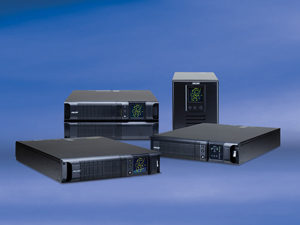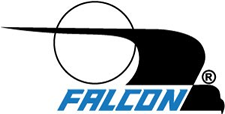Introduction
Many people associate uninterruptible power supply (UPS) usage as a device in an environmentally-controlled location, quietly ready to protect against any power problems. Yet, using a UPS in an industrial versus temperature-controlled (e.g. office) environment is very different and requires awareness of issues in order to provide safe and cost-effective protection for reliable industrial operations.
Brief Background on UPS
Microprocessors pervade modern-day equipment. After the introduction of home computers, the demand for low-cost UPS units increased. They were necessary to provide backup power and prevent data loss in utility outages. UPS manufacturers flooded the market with low-cost “standby” (or “offline”) UPS. The standby UPS is very simplistic in design, providing battery backup, limited output voltage regulation and high voltage transient protection. Utility power, when present, is connected to the equipment (load) with similar voltage transient protection used in surge protected power strips. Only upon a loss of utility power does it switch over to the battery-powered inverter, producing a poorly regulated output waveform. A second type of UPS also evolved–the “line-interactive” UPS which includes the same basic surge protection in addition to minimal voltage regulation through a voltage regulating transformer.
Evolution of the Online UPS for Modern Day Businesses
As business operations became more complex with computerized networks, protection of data and operations became critical. More systems contained power-sensitive microprocessor controllers that were vulnerable to power pollution. Consequently, they required clean, consistent regulated power beyond that being supplied by the local utility. UPS manufacturers responded to the market with more sophisticated UPS designs, culminating with the double-conversion online UPS. A double-conversion online UPS continuously regenerates new, clean regulated, sinewave power to the connected equipment while operating from utility power or its internal batteries. This UPS acts as a firewall between questionable utility power and the power sensitive equipment.
The Requirement of the Online Industrial UPS
Many UPS are now being installed in industrial environments that are often demanding. Process control and other complex systems are taking the UPS into a demanding territory—one that goes beyond the operational limits of a standard online, line-interactive or standby UPS. Powering applications in manufacturing, oil and gas refineries and pipelines, toll roads, water treatment plants, security systems, etc., requires a higher level of power protection. Only online, industrial UPSs, like Falcon’s SSG and SSG-RP families, can provide this level of protection since they are specifically designed for rigorous environments. All plastics, batteries and electronics are rated to operate in wide temperatures.
Process control and other complex systems are taking the UPS into a demanding territory—one that goes beyond the operational limits of a standard online, line-interactive or standby UPS. Powering applications in manufacturing, oil and gas refineries and pipelines, toll roads, water treatment plants, security systems, etc., requires a higher level of power protection. Only online, industrial UPSs, like Falcon’s SSG and SSG-RP families, can provide this level of protection since they are specifically designed for rigorous environments. All plastics, batteries and electronics are rated to operate in wide temperatures.
Industrial applications have been expanding at a phenomenal rate, but the UPS industry has been slower to adapt. This has resulted in standard “computer-grade” UPS units being used in wide temperature, 20ºC to 55ºC (-4ºF to 131ºF), or ultrawide temperature, -30ºC to 65ºC (-22ºF to 149ºF), environments where they were never designed to operate for sustained time periods. Besides temperature, these environments present other detrimental factors, such as localized power pollution generated from other equipment (see explanation below), airborne contaminants, outdoor/remote installations, etc.
Localized Power Pollution
Industrial environments typically suffer from localized power pollution generated by a large amount of equipment, motors, pumps, welders etc. operating from the facility’s electrical system. Industrial computers, servers, programmable logic controllers (PLCs) and variable speed drives (VSDs) are often adversely affected and can even be damaged by the power pollution. The pollution manifests itself in the form of high voltage transients, voltage sags, brownouts, current distortion, noise and other disturbances on the AC power lines throughout the facility. Installing an industrial-grade, double-conversion online UPS will not only provide any required battery backup, but also clean up most of the localized power pollution.
High and Low Temperature Environments
Temperature is the most measured quality in any industrial environment, yet when selecting a UPS for industrial use, the operational UPS temperature range is often overlooked.
A computer-grade UPS has a UL or ETL safety listing at an operational temperature range of 0ºC to 40ºC (32ºF to 104ºF). A UPS manufacturer typically indicates that the UPS has received UL listing status under the UL 1778 standard. This usually indicates that all UL product safety and component thermal testing was performed within the stated 0ºC to 40ºC temperature range, unless otherwise specified by the manufacturer.
As part of the UL thermal testing, the UL engineer verifies that component temperatures are within the limits specified by the component manufacturer. This includes the temperature ratings of the key electronic components, displays, plastics, circuit board materials, insulating materials, magnetics, batteries and everything used in the construction of the UPS. Elevating the ambient temperature can stress a UPS’s internal components to overheat and affect its reliability, including UPS failure and/or the risk of an internal UPS fire.
This is the key to understanding why standard IT and office UPS products should not be installed in non-temperature controlled locations that are outside the manufacturer’s stated operational temperature range.
The Online Industrial UPS Design
The online industrial UPS must pass the same, rigorous safety agency testing of its computer-grade counterpart and receive the same listing status, except the tests are conducted over a wide temperature range, e.g., -20°C to 55°C or -30°C to 65°C. The operational temperature range and safety agency listing status for a UPS is printed on a label located on the UPS rear panel and/or stated in the UPS specifications.
Again, like the office-grade UPS, the temperature range of all key elements of the online, industrial UPS are verified to remain within their stated temperature specifications while the UPS is operating. As a result, an industrial UPS is ruggedly designed to provide reliable operation in an industrial and/or harsh environmental application. Also, it is important to assess the application’s ambient temperature range and ensure that the industrial UPS’s temperature (and other) specifications meet or exceed that range.
Batteries: 10 to 12-Year Rating Saves Costs; Extended Battery Runtimes
It is important to know that office and IT-grade UPS products incorporate low-cost, 5-year rated, Valve Regulated Lead-Acid (VRLA) batteries. Usage of these UPSs and batteries has led to costly premature battery failures, resulting in enormous costs to companies as they encounter frequent battery replacements, equipment stoppages and failures. The battery manufacturer’s stated VRLA, 5-year battery life is predicated on the battery operating at ambient temperatures below 25ºC (77ºF). Heat shortens the life of computer-grade UPS batteries. These 5-year rated batteries used in a 50ºC (122ºF) environment have a service life of less than 9 months. For cold temperatures below 0ºC, the battery’s capacity is reduced, causing the amount of battery runtime to also be reduced.
Falcon has addressed this problem by using 10 to 12-year rated, wide-temperature batteries. These high performance batteries have a superior 10 to 12-year service life in a 25°C environment. An online industrial UPS that incorporates these wide-temperature batteries is capable of operating reliably and maintaining a better service life in temperatures above 40°C and below 0°C.
For example, as mentioned, a standard UPS with 5-year rated VRLA batteries will typically last for only 9 months at 50°C, whereas an industrial UPS with wide-temperature batteries has a rated service life of 4 years operating at 50°C.
In addition, an industrial UPS can handle extended battery backup times for the most critical applications. Having the capability of extending battery backup time from a couple of minutes to multiple hours is crucial for critical applications to remain powered on until shutdown sequences are complete or generator / utility power is available.
NEMA – Rated Enclosures
For remote/outdoor installations, protective NEMA-rated enclosures are necessary. A UPS is typically installed in a NEMA 3R-rated enclosure in an outdoor location with little or no thermal conditioning or protection. Only a few UPS manufacturers offer rugged online, industrial and NEMA-rated enclosures.
Some manufacturers offer NEMA-rated UPS systems with a line-interactive or standby UPS rather than a true double-conversion online UPS. It is important to clearly obtain this information.
Issues in Harsh Environments: The Need for Conformal and/or Powder Coating
Industrial applications yield a wide variety of indoor or outdoor environmental issues including dew point condensation, high humidity, salt fog or airborne contaminants. The type and amount of airborne contaminants must be identified prior to selecting any UPS. Some manufacturers offer optional conformal coating of the UPS’s internal circuit boards and components. Conformal coating is applied on the fully assembled circuit board(s) and coats the entire board and components, providing a barrier from the effects of condensation and conductive contaminants.
In addition, most computer-grade UPS models have a metal chassis manufactured from pre-plated steel. During the forming process, the steel is cut to specifications and formed. The resulting chassis has steel edges that are devoid of protective plating. The resulting UPS chassis will rapidly rust if used in outdoor locations, or in a NEMA 3 enclosure deployed outdoors. Manufacturers offering the new class of industrial UPS models have solved this problem by plating the chassis steel after the chassis has been formed or by fully powder coating the entire chassis and any other metal parts used in the UPS’s construction.
UL 508 for Industrial Control Panels
For the majority of applications, when a UPS is installed in an industrial control panel, it must have a UL 508 listing or equivalent to prevent code compliance issues that can be very costly.
Falcon and a few other UPS manufacturers of the new class of online, industrial UPS have received this UL 508 listing.
Conclusion
In industrial environments, operational uptime and low equipment maintenance costs are critical. Since production stoppages and equipment failures are costly to productive business operations, reliable power is crucial. Typical computer-grade UPSs, including standby, line interactive and standard online, are appropriate for office and temperature-controlled applications. However, only an online industrial UPS, like Falcon’s SSG and SSG-RP, is specifically designed for industrial applications. It is also the most cost-effective and reliable solution.
Click here to download our Guide to Selecting an Industrial UPS.
Engineering Department
Falcon Electric, Inc.
© Falcon Electric, Inc.
All Rights Reserved
